Kerala - Under the British Rule
The first European power to touch India using the sea route was the Portuguese, followed by the Dutch, the British, the Danes and the French. The first to leave Indian shores were the Danes. The Dutch displaced the Portuguese who were among the maiden colonial powers. The Portuguese moved to Goa where they established their supremacy. The Dutch in turn were ousted by the British. The major contest for control over the subcontinent took place between the British and the French, with the former establishing their supremacy over the country and the latter(French) confined to Pondicherry, Karikkal, Mahe, Yanam and Chandanagore in Bengal. Thus the British East India Company gained control and kept under their sway 600 native rulers and principalities through agreements signed from time to time. The Governor General headed the governance on the subcontinent, supported by governors, commissioners and collectors down the line. Overseeing their functioning was the British Parliament. The changes in the administration were possible through the various Charters that were issued by the British Parliament from time to time. Travancore and Kochi, two kingdoms in the southernmost part of the peninsula, continued to be independent of British control but their presence was marked by the posting of a ‘Resident’. To the north were the principalities under the Kolathiri, Zamorin and the Arakkal rulers and some smaller states, all of which was combined to form the Malabar district and fell under the administrative power of the ‘Collector’. These heads were granted revenue concessions and given the ‘maalikhan’ by which they retained lands and received an allowance from the government. The East India Company thus pursued its rule over the subcontinent.
Beginnings of the Indian Renaissance
The hundred years between 1757 and 1857 presented a picture of aggression, grabbing of power, suppression, conspiracies and intrigues. Relying on wars and agreements, the British successfully brought powerful groups like the Sikhs within their control. Concurrently, this period saw the rise and growth of a generation influenced by modern ideas of the West, made accessible to them by the adoption of English education in the country. The growth of newspapers, literature and the call for religious reforms marked the beginnings of the Indian Renaissance.

Raja Rammohun Roy, known as the ‘father of Indian Renaissance, was born in Bengal in the year 1772. In 1805, he started his career as an employee in the East India Company. Young bloods of the times were drawn to the Brahma Samaj which he established. He set up schools and worked to discontinue the practice of polygamy and Sati, thus infusing the society with new ideas.
Raja Rammohun Roy is considered the ‘Father of the Indian Renaissance”. The Mughal Emperor gave him the title of ‘Raja’.
It was his efforts that finally saw the East India Company abolish ‘Sati’, a horrific ritual in which widows should jump to the pyre of their dead husband and set themselves ablaze.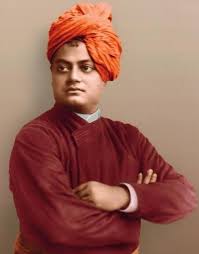
The conservative and tradition bound people contested this decision and took it up before the supreme power in Britain. Raja Rammohun Roy too proceeded to England to counter them, however on his arrival he took ill and passed away. In the years after his demise, the spirit of Renaissance spread to other parts of the country. By 1857, the East India Company had to face a major crisis, the Sepoy Mutiny, which is considered as the first war of Indian Independence by the Indians. But, the historians of the West preferred to refer it as just a ‘mutiny’. The British, however, successfully regained control and totally suppressed the revolt. The then Mughal ruler Bahadur Shah Zafar II was exiled to Burma. His family members were killed. The end of the uprising saw a shift in the powers controlling India – from the East India Company the affairs of India now fell under the direct control of the British Crown, with the Viceroy posting in the country to conduct the affairs of the state in the name of the Crown.
India and the Freedom movement
The British rule over India created a political and cultural milieu which was conducive to the rise of nationalism. The British administration facilitated the coming together of the Indian people across the geography, forging unity and instilling the nationalist spirit in them. On lines similar to the Brahmo Samaj, Mahadev Govind Ranade established the Prarthana Samaj and Swami Dayanand Saraswati formed the Arya Samaj. The Ramakrishna Mission and the Theosophical Society which came later also brought in fresh ideas. Sir Syed Ahmed Khan took up the leadership of the Muslim community and worked to improve the education levels in the community.
The socio-cultural awareness that arose as a result of all these activities manifested itself on a larger scale across the country. The movements that emerged paved the way for the formation of the Indian National Congress which would spearhead the national struggle for freedom. The Indian National Congress founded by AO Hume which had its inaugural session in Bombay (now Mumbai) in 1885 soon transformed into an organisation that brought under it all those who wanted to free the country from the British yoke.
Surendranath Bannerji, Pherozeshah Mehta, Badruddin Tyabji, Gopalkrishna Gokhale, Balgangadhar Tilak, Dadabhai Naoraji, Pandit Madan Mohan Malaviya, Lala Lajpat Rai, Bipin Chandra Pal, Annie Besant, Motilal Nehru, Chettur Sankaran Nair, CP Ramaswamy Aiyer, were the leaders of the Congress in the very early stages.
Swami Vivekananda’s discourses on religion, in India and abroad, instilled self-respect, national consciousness, and religious awakening among the youth of the country. On the occasion of the World Columbian Exposition in Chicago to mark the 400th anniversary of Columbus’ setting foot on America, at the World Parliament of Religions, Swami Vivekanada addressed the gathering and earned worldwide repute for the speech.
The 30 year-old hermit earned a name all over the world. Intellectuals and writers from all countries including personalities like Leo Tolstoy and the French philosopher Romain Rolland became admirers of Vivekananda’s philosophy. He was successful in giving a sense of direction to the Indian people, which in turn energised the Indian National Congress. During the First World War, barrister Mohandas Karamchand Gandhi arrived in India. Gandhi had already acquired fame by using ‘Satyagraha’, the non-violent means of protest, to secure the rights of the Indians in South Africa.
‘divide and rule’ finally led to the country to a split - the partition of the country on the lines of religion. Mohammed Ali Jinnah held on to the demand for a separate homeland for the Muslims.
Indian Independence and Partition
The Constituent Assembly under the stewardship of Dr Babu Rajendra Prasad was formed in 1946 with the specific responsibility of framing a constitution for the country. Mohammed Ali Jinnah who led the Muslim League kept away from this set up because he was unwilling to make a compromise on the question of a separate country to be formed in areas with a majority population of Muslims. Many parts of India were up in flames with communal clashes spreading. On 20th February 1947, the British Prime Minister, Clement Attlee made a significant announcement in Parliament: “India would be granted independence by June 1948”.
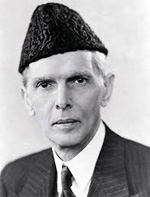
With the idea of implementing this, Lord Mountbatten was appointed the Viceroy of India. Over radio, Lord Mountbatten announced the plans to grant India independence and also create Pakistan conjoining some areas of Punjab and Bengal which had a Muslim majority in the population. Two commissions were established to complete this task. On 1st July 1947, the British Parliament unanimously passed the bill on Indian independence. The part of Punjab, which became part of Pakistan later, came to be known as West Pakistan and the corresponding portion in Bengal became East Pakistan (present day Bangladesh which formed in 1971).
These two units formed the new nation Pakistan with Mohammed Ali Jinnah as the first Governor General. On 13 August, Lord Mountbatten announced the birth of Pakistan. On the midnight of 14th August, India was declared a free country. The Constituent Assembly, which met at midnight, passed a resolution appointing Lord Mountbatten as the Governor General of independent India. With the handing over of the tricolour flag to Dr Rajendra Prasad who presided over the session, the new nation got its national flag. On the morning of 15 August 1947, the new Governor General and the cabinet headed by Jawaharlal Nehru were sworn in. While India gained Independence, it attained dominion status later, the constitution being formulated to give India the status of a Republic.

On 26 November 1949, the Constituent Assembly under the leadership of Dr Rajendra Prasad completed the task of preparing a Constitution. India enjoyed dominion status under the Commonwealth after Independence. With the completion of the Constitution, the British Parliament passed a resolution on 16 December 1949 recognising India as a Republic. The British monarch seized to have any rights on India, although it was still part of the Commonwealth. India attained the status of a Republic on 26th January 1950. Centre-State relations, the Judiciary, Central and State governments, Fundamental Rights, all of this found place in the new Constitution.
Kerala, a state in the Indian Union
When India attained independence, present day Kerala had not come into being. Instead, there were some fragmented princely states like Travancore, Kochi, and Malabar. It had been a long dream of the Keralites to see them to merge as a single unit. During the nationalist struggle, meetings and discussions had taken place with this in mind. Malabar was part of the Madras Presidency and before Independence the elected representatives enjoyed limited powers. Kochi and Travancore had its own legislative assemblies. Eligibility for election was decided on the taxes paid and from graduates; others were nominated members by the government. In both states the Diwan was the head of the Assembly. For this reason, only acts that the government was interested in could be passed. However, on the basis of reforms undertaken in 1938 under the initiative of the Kochi Maharaja, it was decided to handover some portfolios to a popular minister. Ambat Sivaraman Menon was the first person to enjoy that position.
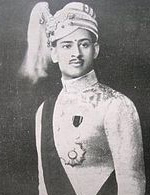
Balarama Varma
This system of reposing more powers on such a minister continued in Kochi. As Indian Independence drew close, the Diwan of Travancore Sir C P Ramaswamy Aiyer declared Travancore as an independent state’ but he had to met with resistance from the people for this. On 25 July 1947 following an attempt on CP’s life, the then Maharaja Sri Chithira Thirunal Balarama Varma informed the Indian government of the decision to join the Indian union. He also set in motion the first step towards the establishment of democratic functioning by introducing ‘adult franchise’. On 4th September, he issued a proclamation whereby a Constituent Assembly was envisaged with members elected by the people. Following the election held, the first popularly elected ministry of Travancore was headed by Pattom Thanu Pillai as the Prime Minister, on 24th March 1948. On 1st July 1949, Travancore and Kochi combined to form the state of Travancore-Kochi. Sri Chithira Thirunal, the Maharaja of Travancore, became the ‘Rajpramukh’ (the governor) of the new state, while the Kochi ruler, Pareekshit Tampuran desired to renounce his royal status and lead the life of a commoner. After this, efforts continued to bring Malabar within this unit. With Sayyid Fasal Ali, Pandit Hridayanath Kunzru and Sardar KM Panikar of the Committee on ‘Reorganisation of States’ gave the all clear to the formation of greater Kerala with the inclusion of Malabar to the already existent Thiru-Kochi. With the addition of Kasargod and Malabar to Thiru-Kochi, and renouncing hold over Agasteeswaram, Kalkulam, Vilavankode, Thovala and part of Shencottah to Madras, the new political and geographical entity called ‘Kerala’ came into being. This was followed by Sri Chithira Thirunal stepping down as ‘Rajpramukh’. PS Rao took up position as Acting Governor of Kerala till Dr B Ramakrishna Rao came and took up office as Governor of Kerala. It was under the new Governor that the election to the first Legislative Assembly of the new state of Kerala was conducted. The Communist Party secured a majority and on 5th April under the Chief Ministership of EMS Nambudiripad, the first ministry took oath and the first elected Communist Party was in place.
European powers bid goodbye to Kerala
With the formal creation of the state of Kerala, the places where the English, the Dutch and the Portuguese had established trade relations and constructed forts, now fell in the erstwhile Madras state (now Tamilnadu). Colachel, where the Dutch were defeated by Marthanda Varma, Tengapattanam, where the Dutch set up a factory, the Kalkulam palace (Padmanabhapuram Palace) visited by Neuhaff and other Dutchmen, all lie in Tamilnadu. But, the administration of Padmanabhapuram Palace lies under the control of Kerala.
The first European power to leave India was Denmark followed by the Dutch. With Independence coming in August 1947, the English too left. Although the French handed over Chandanagore in Bengal, they retained Pondicherry, Karikal, Mahe and Yaanam till 1954. It took India 14 years after Independence to evict the Portuguese from Goa after an armed action. In 1961 when the Indian armed forces marched into Goa, the colonial powers ceased to have control on any part of India. Thus the European power which was the first to touch India was also the last to leave the soil, thus snapping the last link of the colonial interests and power in India.

Mohandas Karamchand Gandhi
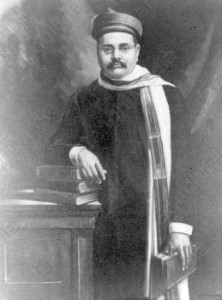
Gopal Krishna Gokhale

Bal Gangadhar Tilak
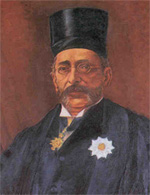
Pherozeshah Mehta
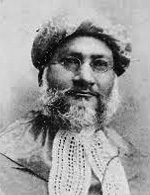
Badruddin Tyabji
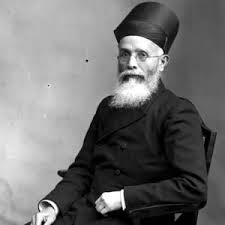
Dadabhai Naoroji
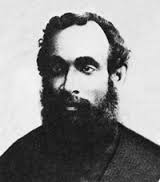
Surendranath Bannerji
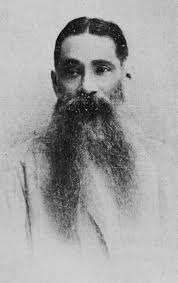
W C Banerjee
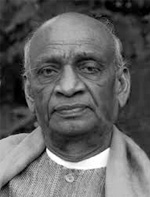
Vallabhbhai Patel